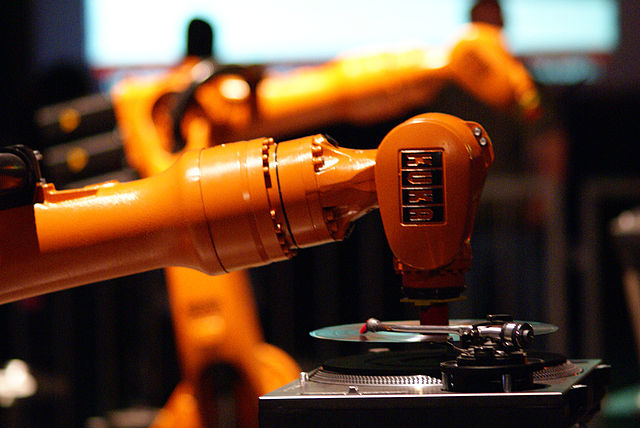Robots are performing increasingly more routine tasks without human participation, which is expected to lead both to a breakthrough in the efficiency of production, and to a serious restructuring of the labor market in the foreseeable future. China, which is the largest importer of robots in the world, plans to replace millions of workers. In Guangdong Province, for example, the government invests $ 154 billion in projects to introduce robots into production in the next two years. In particular, more than a million devices will be installed at the plants of the Taiwanese electronics manufacturer Foxconn. By 2018, according to the International Federation of Robotics, China will account for more than a third of all industrial robots used in the world.
The introduction of robotics in developed countries will return production to homelands and lead to a change in global supply chains. This, in turn, will negatively affect economies of developing countries. In this case, robots can compensate for the economic losses from aging populations in countries such as Japan and Germany, Moody's analysts have calculated.
75% of global purchases of robotics are committed in China, Germany, Japan, South Korea and the United States, which are also key hubs of global trade, with the three Asian countries acquiring about half of all industrial robots in 2013. Of these, the PRC is particularly active - according to the national program Made in China 2025, more than a third of the world's industrial robotics should be concentrated in the country by 2018. At that, the country gives preference to electronics and engineering - they are also one of the most globalized sectors of industry.
As a result, the five leaders now find domestic production more economically expedient, compared to countries with cheap labor. However, this phenomenon would rather lead to a reduction in jobs rather than growth. The change will primarily affect developing economies with a cheap but skilled labor force who previously acted as beneficiaries of the growth of global trade and investment - the Czech Republic, Slovakia, Hungary, Malaysia and Thailand. Mexico will be affected less because of the slower pace and higher cost of implementing robotics in the US, the authors of the study predict.
Technology development will have an impact on investment, competition, production and employment in both the lead countries and their trading partners. At that, extent of this influence will depend on the share of high-tech exports in the structure of GDP and employment, technological adaptability, spending on science. Countries with an aging population will pay attention robots’ ability to compensate for the loss of a reduction in the proportion of able-bodied citizens. This will be relevant for Japan and Germany, where the share of the population over 65 years by 2030 will reach 30.7% and 28.2%, respectively.
source: bloomberg.com
The introduction of robotics in developed countries will return production to homelands and lead to a change in global supply chains. This, in turn, will negatively affect economies of developing countries. In this case, robots can compensate for the economic losses from aging populations in countries such as Japan and Germany, Moody's analysts have calculated.
75% of global purchases of robotics are committed in China, Germany, Japan, South Korea and the United States, which are also key hubs of global trade, with the three Asian countries acquiring about half of all industrial robots in 2013. Of these, the PRC is particularly active - according to the national program Made in China 2025, more than a third of the world's industrial robotics should be concentrated in the country by 2018. At that, the country gives preference to electronics and engineering - they are also one of the most globalized sectors of industry.
As a result, the five leaders now find domestic production more economically expedient, compared to countries with cheap labor. However, this phenomenon would rather lead to a reduction in jobs rather than growth. The change will primarily affect developing economies with a cheap but skilled labor force who previously acted as beneficiaries of the growth of global trade and investment - the Czech Republic, Slovakia, Hungary, Malaysia and Thailand. Mexico will be affected less because of the slower pace and higher cost of implementing robotics in the US, the authors of the study predict.
Technology development will have an impact on investment, competition, production and employment in both the lead countries and their trading partners. At that, extent of this influence will depend on the share of high-tech exports in the structure of GDP and employment, technological adaptability, spending on science. Countries with an aging population will pay attention robots’ ability to compensate for the loss of a reduction in the proportion of able-bodied citizens. This will be relevant for Japan and Germany, where the share of the population over 65 years by 2030 will reach 30.7% and 28.2%, respectively.
source: bloomberg.com





